Cornerstone Laying Ceremonies and the Buildings that Shape Us
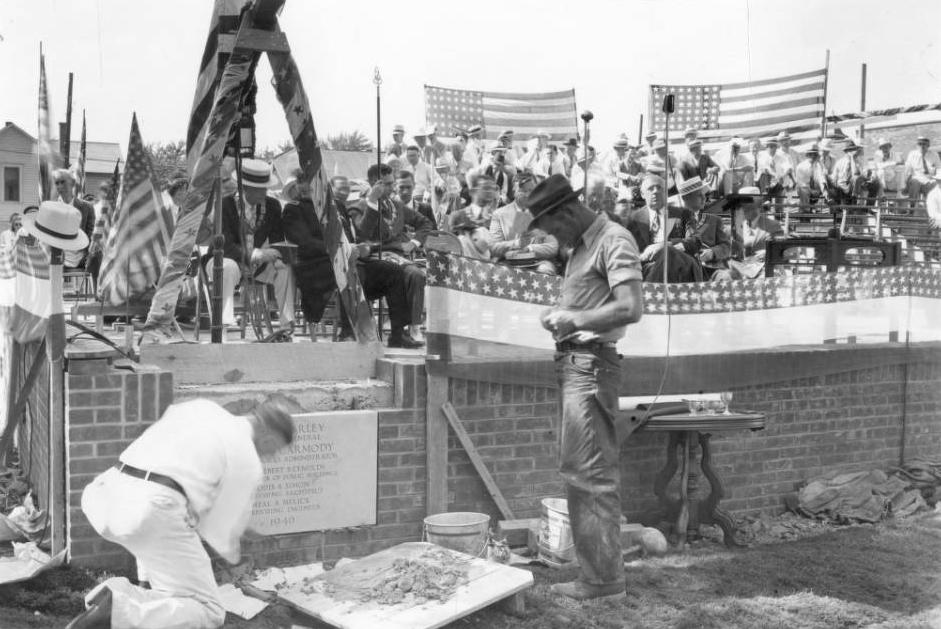
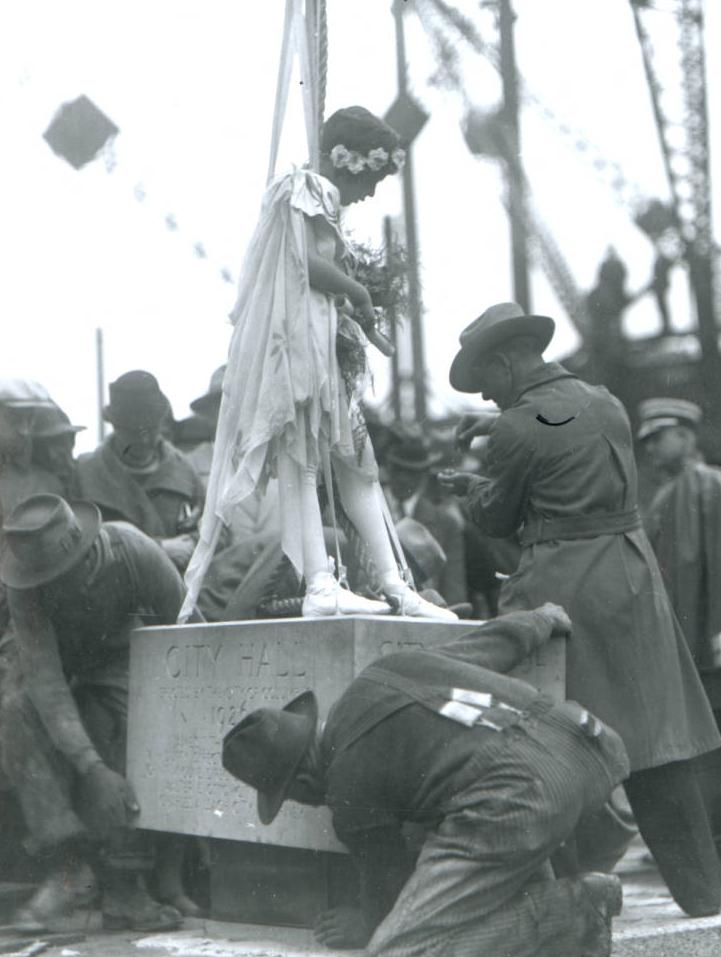
Whether surrounded by a bustling city or a quiet rural community, buildings make up the places and spaces that make us who we are. Of course buildings serve a necessary utilitarian function, but importantly, they house many of our memories, milestones, and loved ones. Adding a new structure to a landscape often evokes sentiments of pride and the promise of a better future, and cornerstone laying ceremonies are one way we have ritually commemorated, and in many ways consecrated, new buildings and the communities they serve. This blog post will briefly explore the history of building dedication rituals and their prevalence in Ohio history highlighted by photographs of cornerstone laying ceremonies around the state from Ohio Memory.
Ancient cultures across the globe consecrated building foundations by performing various rituals. Ancient Egyptian and Mesopotamian cultures left foundation deposits–not necessarily near a cornerstone, but a deposit in the building’s foundation with the intention that these items, such as small vessels or animal sacrifices, would never be retrieved, and were to become a permanent offering and part of the structure. These offerings were reserved for buildings of high significance, particularly religious buildings like temples. Votive offerings were widespread in different capacities throughout ancient Greece and Rome as well.
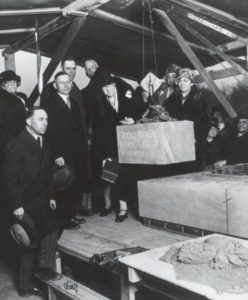
Into the medieval period, the cornerstones of churches often contained relics from a community’s patron saint or local martyr. Although the motivations for these behaviors within their cultural and historical contexts are vastly different from our own, and far more complex than what is described here, modern cornerstone laying ceremonies gesture back to these traditions of our ancient past.
In architectural terms, a cornerstone is the first stone laid in a building’s foundation to which all other stones are laid in reference. Over time, the cornerstone laying has become more of a ceremonial event than the first step of the construction process, as the laying of the cornerstone is symbolic of a new era of prosperity and opportunity. Often, a modern cornerstone has a dedicatory inscription on its exposed face or contains a time capsule, and is usually laid with a ceremonial trowel by a prominent member of the institution or a local celebrity.
Arguably the most iconic building of the cityscape of downtown Columbus, Ohio, is the immediately-recognizable LeVeque Tower. Designed by architect Henry C. Crane, it was originally known as the American Insurance Union Citadel and was the tallest building in Columbus from 1927 until 1974, at 555.5 feet–purposefully six inches taller than the Washington Monument. Emphasized by the intentional use of “Citadel,” or fortress, in its name, this building was clearly meant to be seen as the stronghold of the company and insurance industry. This concept is mirrored by its elaborate Art Deco architecture and decoration, with four 18-foot eagles at the corners of the tower and four 20-foot statues on the sides (since removed). The financial downfall of the American Insurance Union did not change the highly-regarded status of the building for Ohioans. In 1975, the LeVeque Tower, eventually named after its later co-owner Leslie L. LeVeque, was added to the National Register of Historic Places.
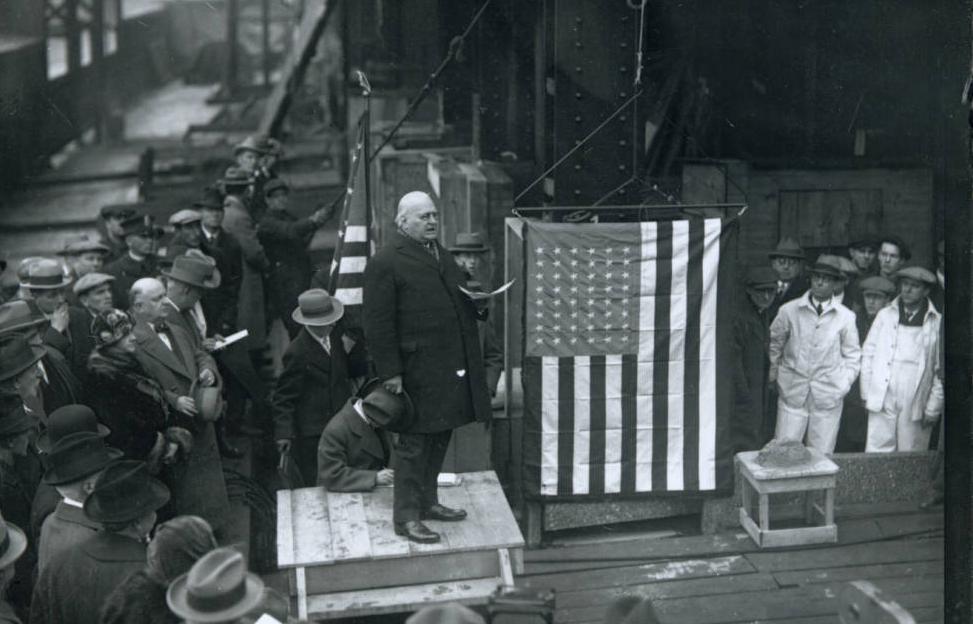
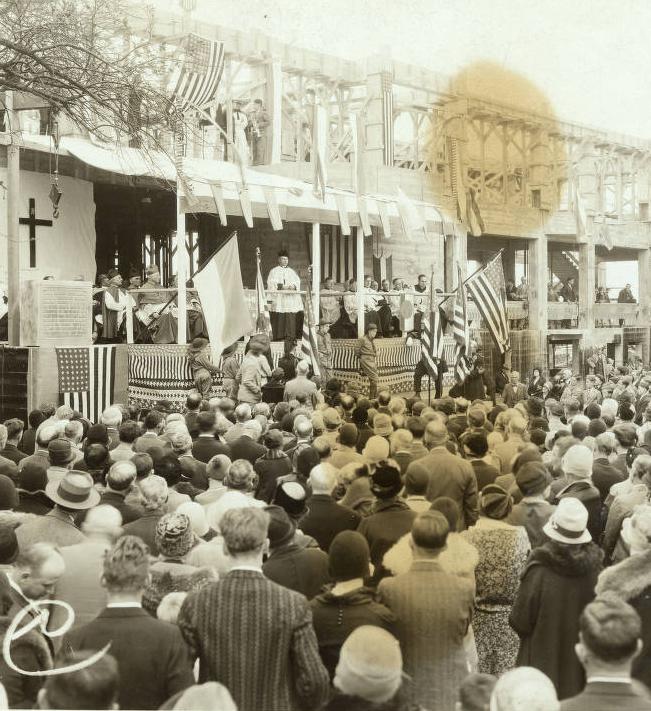
Founded by Monsignor Joseph Jessing in 1888 as an extension of a local orphanage, the Pontifical College Josephinum is an important institution and building both domestically and globally. The Josephinum was originally located on East Main and 17th Streets in downtown Columbus, and the cornerstone for its present location in Worthington was laid in 1929, one week before the stock markets crashed. Originally a German school for priests to serve Catholic immigrant families, the school gained pontifical status in 1892 and to this day remains the only pontifical college in the western hemisphere. Not only is the Josephinum a source of pride for Ohioans, but students and religious scholars from all over the world come to the Josephinum for seminary training and scholarship.
Ohio takes pride in supplying eight U.S. presidents, one of these famous Ohioans being President William McKinley. Born in Niles, Ohio, in 1843, McKinley was elected the 25th President of the United States from 1897 to 1901 and led the country to victory in the Spanish-American War. Under President Taft, another Ohio president, Congress established the National McKinley Birthplace Memorial Association and funded the National McKinley Birthplace Memorial in Niles.
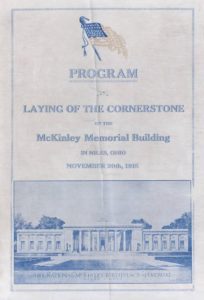
The cornerstone was laid in a ceremony on November 20, 1915, and was inscribed with “Erected 1915. To Perpetuate the Name and Achievements of William McKinley, Twenty-fifth President of the United States of America. Born January 29, 1843. Died September 14, 1901.” Constructed from Georgian marble, the memorial consists of an exedra, or semi-circular colonnade at the center containing a marble statue of McKinley, flanked by two wings: the McKinley Memorial Library and the McKinley Museum.
This post highlights only a handful of the many buildings important to regional communities and the state of Ohio as a whole. Whether we consciously realize their importance or not, the buildings around us help to shape our cultural identity and who we are as Ohioans and the communities we are a part of. What buildings in your community mean the most to you?
Thanks to Kristen Newby, metadata coordinator at the Ohio History Connection, for this week’s post!



Leave a Reply
You must be logged in to post a comment.